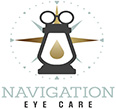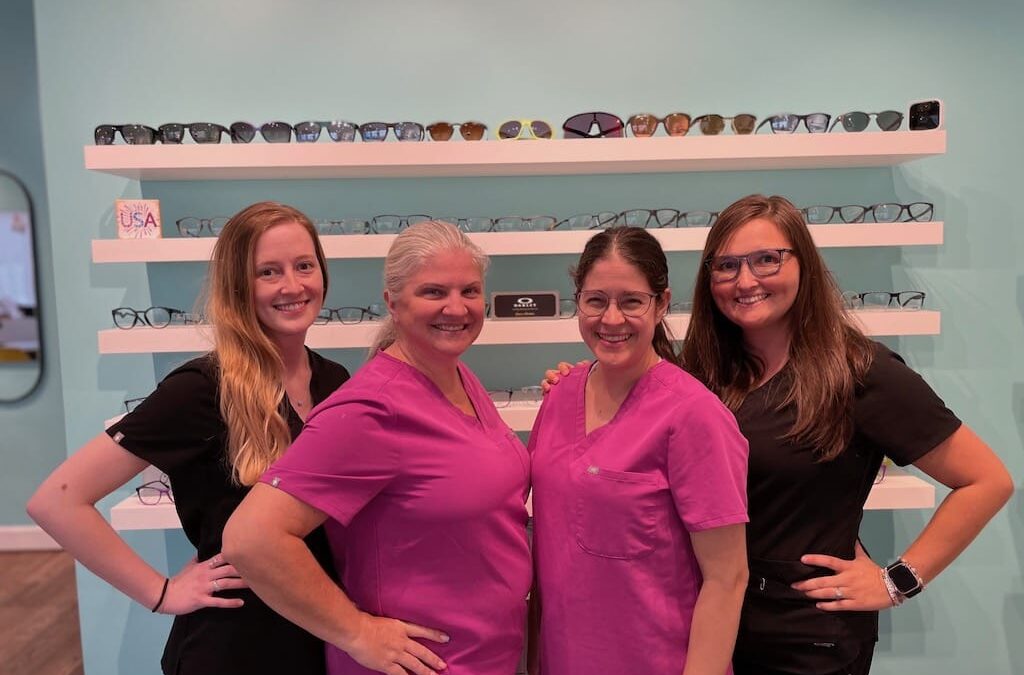By: Dr. Amber Teten – Optometrist Chesapeake VA
As an Optometrist Chesapeake VA specializing in pediatric eye care, one of the most common conditions I see in children is amblyopia, also known as “lazy eye.” Amblyopia occurs when one eye doesn’t develop normal visual acuity, usually due to a misalignment or other issue that prevents the eyes from working together as a team. This can lead to one eye being favored over the other, causing the brain to rely on that eye more heavily and ultimately leading to reduced vision in the other eye. Amblyopia affects approximately 2-3% of children. If left untreated, it can have serious consequences, including permanent vision loss in the affected eye. However, the good news is that amblyopia is highly treatable, especially when diagnosed and treated early. Dr. Teten, an Optometrist Chesapeake VA, will cover everything you need to know about amblyopia, including the causes, symptoms, and treatment options. Suppose you suspect your child may have amblyopia or have any concerns about their vision. In that case, we encourage you to schedule an appointment with your local pediatric eye doctor at Navigation Eye Care by calling 757-529-6889.
What is Amblyopia?
Amblyopia is a condition where the brain and the eye do not work together properly. It is usually caused by a misalignment of the eyes or a refractive error (such as nearsightedness, farsightedness, or astigmatism) that is left untreated for a prolonged period. When one eye has better vision than the other, the brain will rely more on the eye with better vision and ignore the information it receives from the weaker eye. Over time, the brain will develop a preference for the stronger eye, leading to amblyopia in the weaker eye.
Amblyopia can be classified into two types: strabismic amblyopia and refractive amblyopia. Strabismic amblyopia is a type of amblyopia that occurs when the eyes are misaligned, also known as strabismus or “crossed eyes.” In this type of amblyopia, the brain receives two different images from each eye. Eventually, it begins to rely on one eye more than the other, decreasing visual acuity in the weaker eye. Strabismic amblyopia is often diagnosed in early childhood, as the misalignment of the eyes is usually apparent by age two or three.
Refractive amblyopia is another type of amblyopia due to a difference in the refractive error between the two eyes. Refractive errors are common vision problems that occur when the shape of the eye prevents light from focusing correctly on the retina, leading to blurred or distorted vision. In refractive amblyopia, one eye may have a significantly different refractive error than the other eye, causing the brain to rely more heavily on the eye with clearer vision. Over time, this can decrease visual acuity in the eye with a poorer refractive error.
Symptoms of Amblyopia
The symptoms of amblyopia can vary depending on the type and severity of the condition. In some cases, amblyopia may not have any noticeable symptoms, particularly in cases where the condition only affects one eye. However, in many cases, the most common symptom of amblyopia is decreased vision or visual acuity in one or both eyes. This can be particularly noticeable when reading or seeing objects in the distance. Other symptoms may include:
- Poor depth perception.
- Difficulty seeing in low-light conditions.
- An inability to perceive specific colors.
In some cases, amblyopia may also cause headaches or eye strain, particularly if one eye does more work than the other to compensate for the decreased vision. It’s important to note that amblyopia may not be noticeable in many cases without a comprehensive eye exam, which is why regular eye exams are so important, particularly for young children.
Additionally, a few common signs that parents can look out for in their children include:
- Frequent eye rubbing
- Squinting or closing one eye
- Poor depth perception
- Tilting the head to one side
- Difficulty with tasks that require good vision, such as reading, writing, or playing sports
If left untreated, amblyopia can lead to permanent vision loss in the affected eye. Therefore, having your child’s eyes checked regularly by a qualified Optometrist Chesapeake VA specializing in pediatrics is crucial.
Diagnosing Amblyopia
The diagnosis of amblyopia usually involves a comprehensive eye examination with an Optometrist Chesapeake VA. The eye doctor may perform a series of tests, including; visual acuity testing, binocular vision assessment, and cycloplegic refraction. Visual acuity testing measures how well a person can see at various distances. Binocular vision assessment evaluates how well the eyes work together as a team. Cycloplegic refraction is a test that measures the eye’s refractive error after the pupil has been dilated with eye drops. If amblyopia is suspected, the eye doctor may perform additional tests, such as a contrast sensitivity test or a visual evoked potential (VEP) test, to determine the extent of the condition. Children need to have their eyes checked regularly, as amblyopia is most easily treated when diagnosed early.
Treating Amblyopia
The earlier amblyopia is detected, the easier it is to treat. Treatment options for amblyopia typically involve correcting the underlying cause and encouraging the brain to use the weaker eye more effectively. Some of the most common treatments conducted at Navigation Eye Care include:
Correcting refractive errors: If a child has a significant refractive error in one eye, correcting it with glasses or contact lenses can help improve the vision in that eye and prevent amblyopia from developing.
Vision therapy: This is a personalized program of exercises and activities designed to improve visual function and treat vision problems such as amblyopia. At Navigation Eye Care, vision therapy is performed under the guidance of Dr. Teten and a qualified vision therapist. The therapy sessions can involve various activities to improve eye movement, visual processing, and other aspects of visual function. Vision therapy may be recommended in addition to glasses.
So, if you have a child you suspect has amblyopia, have your child’s eyes checked out by a qualified Optometrist Chesapeake VA specializing in pediatrics. We encourage you to set up an appointment with the Navigation Eye Care team by calling 757-529-6889 or schedule an appointment online. We are equipped and prepared to care for you and your whole family. If you are looking for excellent service in a friendly manner, check us out. We highly recommend that you choose Navigation Eye Care when looking for an Optometrist Chesapeake VA.

